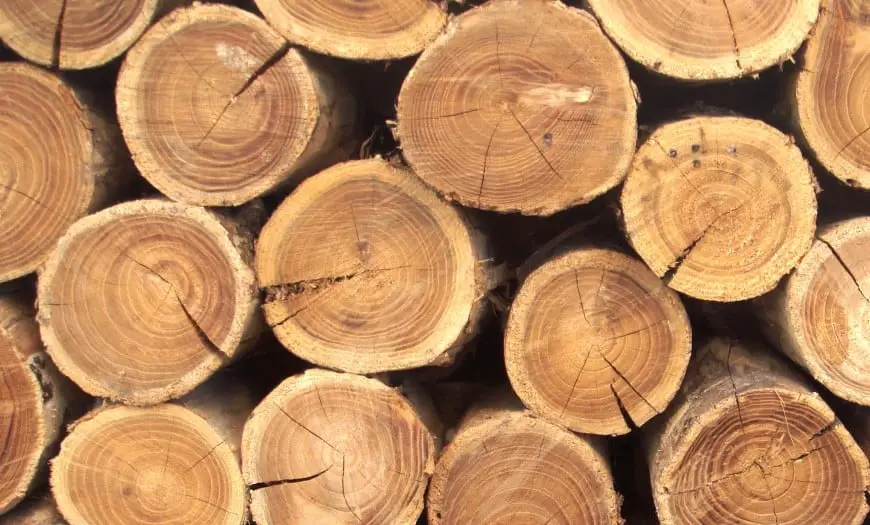Characteristics of Lumber Grading & Structural Properties of Wood

Lumber should be easy to understand: it is a log that has been cut or chopped to be utilized for construction or woodworking applications. Lumber, on the other hand, comes in a wide variety of sizes, cuts, and varieties.
Different types of wood have varying properties and characteristics, hardness, and compression strength, making certain types of timber preferable for certain applications than others.
Knowing the fundamental qualities of lumber may make selecting the proper pieces for the work much easier—and can help you avoid the hazards of selecting the wrong wood for the job.
Characteristics of Lumber
When selecting lumber, it is important to understand the characteristics of the different types of wood. In this article, we will discuss 4 of the most important characteristics of lumber to consider.
1. Lumber Density
When choosing lumber for a project, it is essential to consider the characteristics of the wood. One of the most important characteristics is density. Density is a measure of the weight of a material per unit volume. Lumber with a high density will be stronger and less likely to warp than lumber with a low density.
The density of lumber can vary depending on the type of wood and the age of the tree. The densest woods are mostly those that are dark, such as walnut and hickory. The lightest woods are those that are pale, such as pine and fir.
Lumber becomes denser as it ages. The cells in young wood are filled with water, which makes the wood less dense. As the wood dries out, the cells lose their water and the wood becomes denser.
2. Lumber Texture
The texture of lumber can vary significantly based on the species of tree from which it was cut. Some woods, like oak, have a very rough texture, while others, like pine, have a much smoother texture.
The texture of lumber can also be affected by how it is processed. Lumber that has been planed or sanded will have a much smoother finish than lumber that has not been processed at all. It is important to consider the desired outcome of a project when choosing the right type of lumber and to select the appropriate level of processing.
3. Lumber Color
The color of lumber can vary substantially, depending on the species of tree from which it was sourced. In general, there are three types of lumber colors: red, white, and yellow.
The most common type of lumber is red, which comes from hardwood trees such as oak, cherry, and maple.
Red lumber is typically strong and dense, making it ideal for use in furniture and construction projects. White lumber is sourced from softwood trees such as pine and cedar. It is less dense than red lumber but is still a strong and durable material. Yellow lumber is also sourced from softwood trees, but it is lighter than white lumber. Yellow lumber is not as strong as red or white lumber, but it is more resistant to decay and rot.
4. Lumber Grain
Grain refers to the orientation of the wood fibers in a piece of lumber and can affect its strength, stability, and how it reacts to changes in humidity.
There are three main types of grain: straight, spiral, and wavy. Straight grain is the most common and is typically found in boards that are less than 12 inches wide. Spiral grain is more common in wider boards and results from the tree’s growth ring spiraling around the trunk. Wavy grain is caused by environmental factors such as wind or water and is often called “defect” grain.
The type of grain impacts a board’s strength and stability. Straight-grained lumber is stronger and more stable than lumber with other types of grain.
Lumber Grading
Lumber grading is a system that classifies lumber according to its quality and strength. The grading process takes into account the species of the wood, its size, and the number of defects present. Lumber is assigned a grade based on how well it meets certain standards.
Before leaving the mill, each piece of lumber is rated for appearance or structural stiffness and strength, depending on its intended application.
Lumber is marketed by species and grade, with the better grade commanding a greater price. Grading allows the architect and engineer to create as cost-effectively as feasible by only employing the highest grade necessary for a certain purpose.
The most important characteristic of lumber grading is the grade mark, which indicates the grade of the lumber. The grade mark is usually stamped on one end of the board. The most common grades are construction, select structural, framing, standard, utility, and economy.
Another important characteristic of lumber grading is the yield point. The yield point is a measure of how much stress a board can withstand before it breaks. It’s measured in pounds per square inch (psi). The higher the yield point, the stronger the board is.
Structural Properties of Wood
The strength of a piece of wood is determined by the species, grade, and load direction with regard to the grain.
For example, wood is often many times stronger parallel to the grain than perpendicular to the grain in both tension and compression. With its normal collection of flaws, it is stronger under compression than under stress or tension.
The table above is comparing the average structural qualities of framing timber to those of brick masonry, steel, and concrete.
Only wood and steel possess sufficient tensile strength among the four materials. On a strength-per-unit-weight basis, defect-free wood is similar to steel, but with the typical run of faults, an average piece of timber is somewhat inferior to steel by this measure.
When building a wooden structure, the architect or engineer evaluates the maximum stresses that are anticipated to occur in each structural part and then chooses the right species and grade of timber for each.
For severely strained main members, it is usual practice to choose a stronger but more costly species. For the rest of the construction, a weaker, less costly species (such as Eastern hemlock) or species group (Hemlock Fir, Spruce Pine Fir) is recommended.
The designer assigns ratings to each species based on published tables of acceptable stresses. The greater the structural grade, the more stress that may be tolerated. However, the less expensive the lumber is, the lower the structural grade.
Other than species and grade, a variety of factors determine the usable strength of wood. When it comes to determining how long a wood will be subjected to its maximum load, the temperature and moisture conditions in which it will be used are important.
Certain fire retardant treatments can lower wood’s strength marginally. When designing a wooden construction, all of these elements are taken into consideration.






